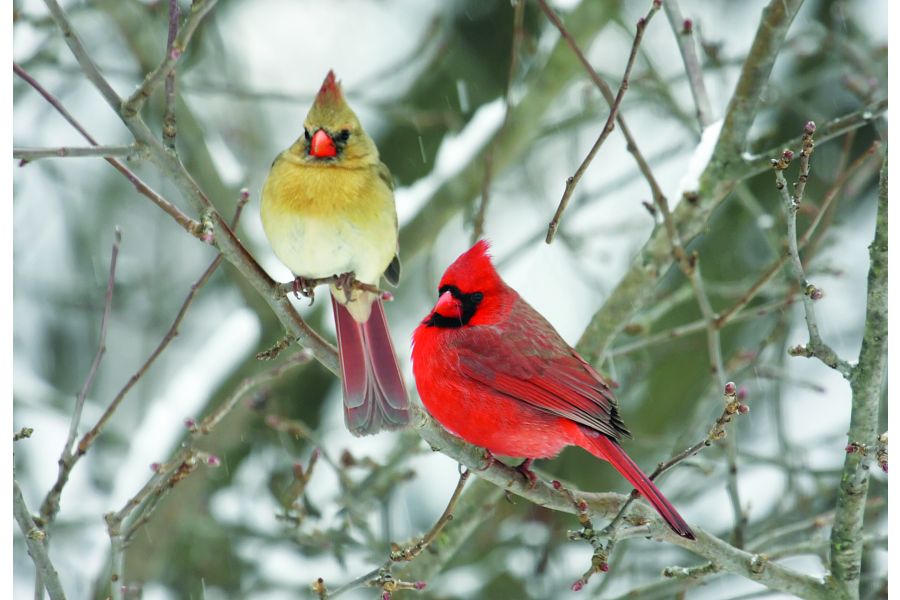Bird species that frequent your feeders in the winter are fewer than those that come in the summer. A few that are permanent, year round residents are cardinals, chickadees and sparrows. Others are birds whose habitat is primarily boreal regions. Their feeding patterns are less predictable and tend to be cyclic and thus, what is called “irruptive”. If food in their primary habitat is in short supply, you may see them at your feeder. Some of these species include Red-breasted nuthatches, Common and Hoary redpolls, Pine siskins, Red and White-winged crossbills, and Pine grosbeaks.

Tufted titmouse and male Cardinal
There are three main choices of food: Large seeds, small seeds, and suet.
Large Seeds
Large seeds include black-oil sunflower, safflower, peanuts, shelled corn, ear corn and cardinal mixes that contain sunflower, safflower and peanuts. About 80 to 90 percent of seed used in Minnesota consists of black-oil sunflower seeds and cardinal mixes. These have the greatest appeal to the widest variety of winter birds and contain the highest source of energy. The list of birds that favor sunflower seeds includes: Northern cardinals, blue jays, Black-capped and Chestnut-backed chickadees, House and Purple finches, American goldfinches, Evening and Pine grosbeaks, Gray and Steller's jays, nuthatches, crossbills, titmice.
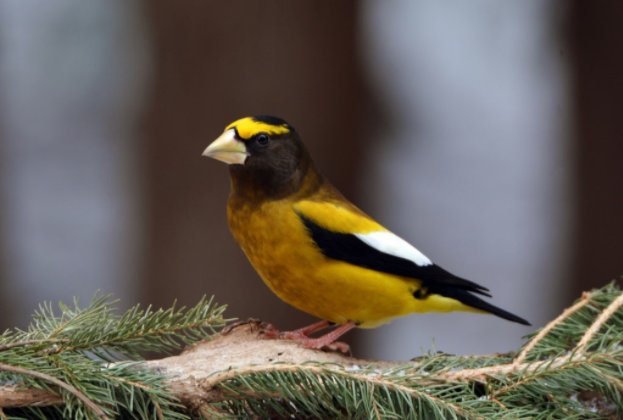
Male Evening Grosbeak
If you are concerned about the shells piling up under your feeder, consider purchasing sunflower hearts or a mix of seeds without hulls or use Ground Cleanse to help the seed break down more quickly.
Peanuts are another high-energy food and are attractive to Black-capped chickadees, Nuthatches, Woodpeckers, Blue jays and Cardinals.
Cracked corn is very attractive to House sparrows and starlings who will gorge themselves, so if you do not wish them to frequent your feeder, it is recommended not purchasing mixes that primarily contain these. Small amounts of millet can be scattered on the ground or on tray feeders to accommodate Dark-eyed juncos and Mourning doves. If you use seed mixes high in millet during the summer, decrease this for winter feeding.
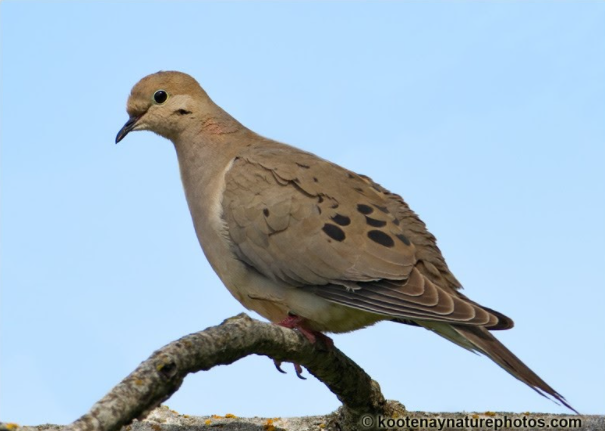
Morning Dove
Small Seeds
In the small seed category is Nyjer or thistle seed. This is an excellent food source and winter staple for Black-capped chickadees, Goldfinches, Purple Finches, Redpolls and Pine siskin.

Redpoll
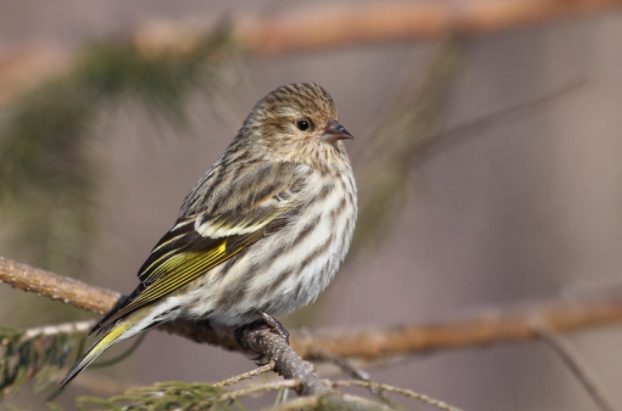
Pine siskin
Suet
Suet and fruit mixes are an excellent source of fat for birds in the winter. This is necessary for them to maintain constant body temperatures and energy stores. This is particularly attractive to Woodpeckers, Black-capped chickadees and Nuthatches.
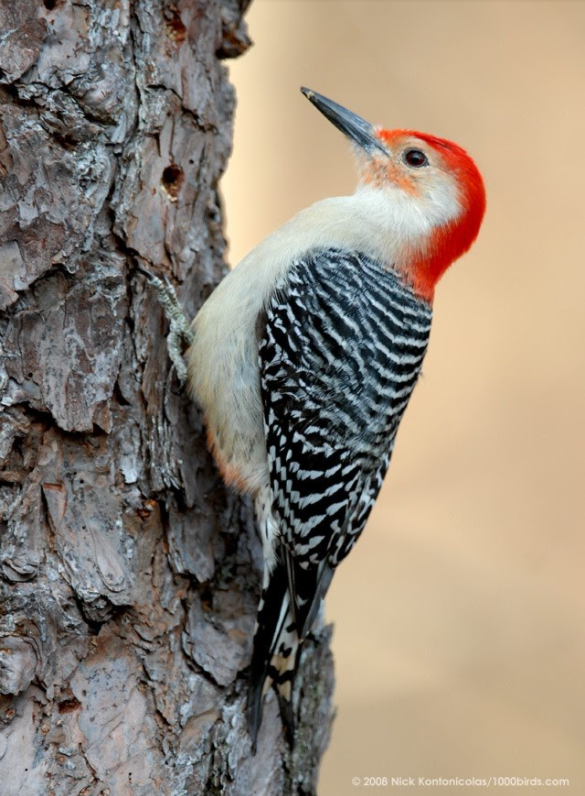
Red-bellied woodpecker
Winter feeding differs from other times of the year
Winter feeding differs from that during other times of the year not only in the birds that frequent your feeders but in the way you feed them.
- Grouping feeders closer to the house allows for easier access for filling and cleaning them, but also for viewing.
- Feeders can be placed on your deck. A cluster of feeders (3-4) with varying types of seed is preferred. That will attract the widest range of birds.
- Having at least one tray-type feeder will provide seed for Cardinals, who do not perch.
- If placing feeders in the yard, putting them near shelter and protective cover, such as near evergreens, is best. This allows them a place to find cover from weather and predators between feedings.
- To ensure the safest location, place them at least 10 feet away so the predators, be they raptors or cats, cannot use the shelter as a place to hide. If this is not possible, encircling the feeders with wire mesh fencing that is at least 30 inches high and 6-8 feet in diameter will deter predators. It is also important to note placement near windows.
- If you want to place feeders near windows, closer is better. That way the birds are reducing their speed as they approach the feeder, thus lessening the chance of serious collisions with the window.
In addition to feeding with seed and suet, providing a source of water through the winter is a necessity. Heated bird baths are a great way to do this.
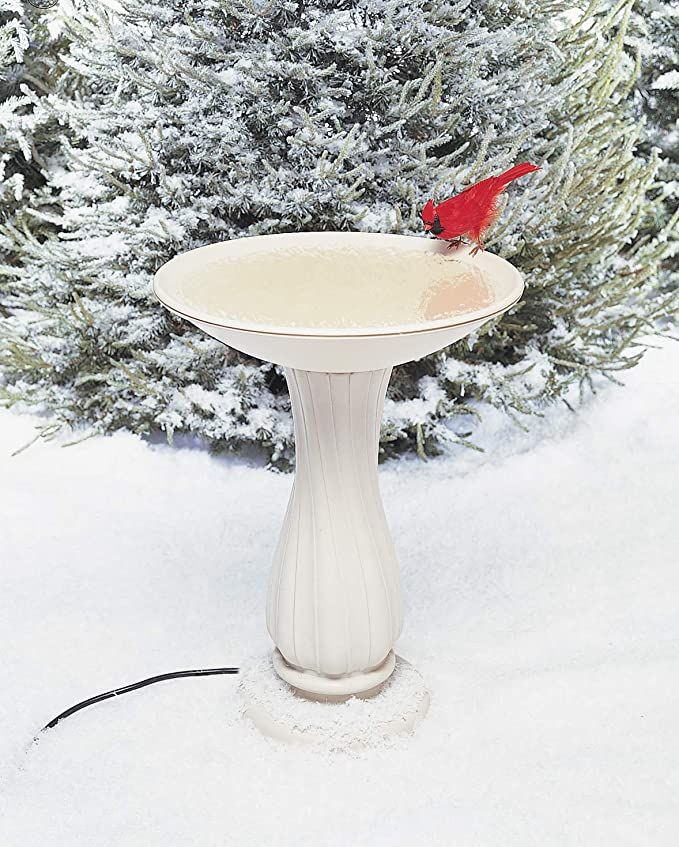
In addition to feeding with seed and suet, providing a source of water through the winter is a necessity. Heated bird baths are a great way to do this.
Providing a source of sustenance for these beautiful creatures throughout the year, but particularly in the winter not only ensures their survival but provides hours of enjoyment.
The experts at Gertens are always available to answer your questions!

